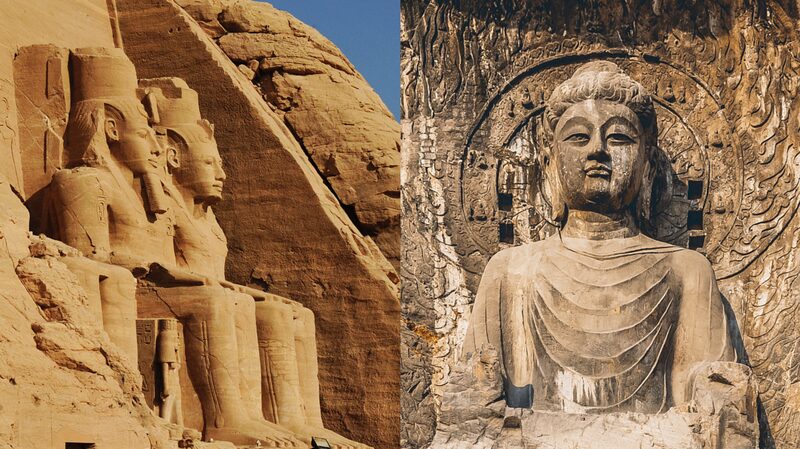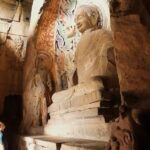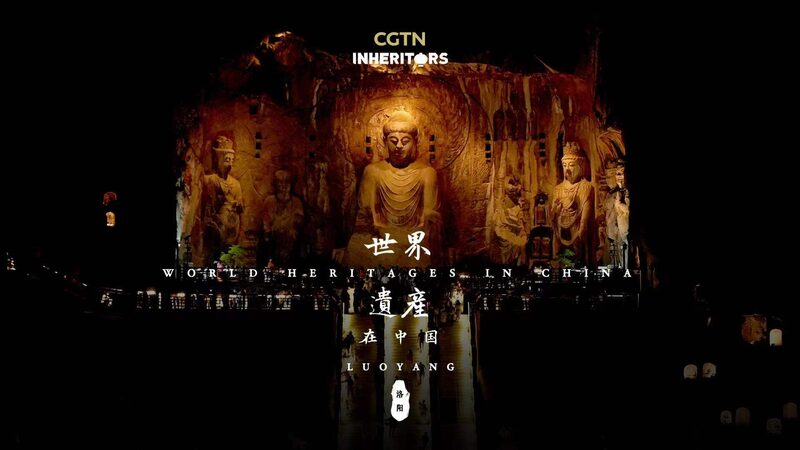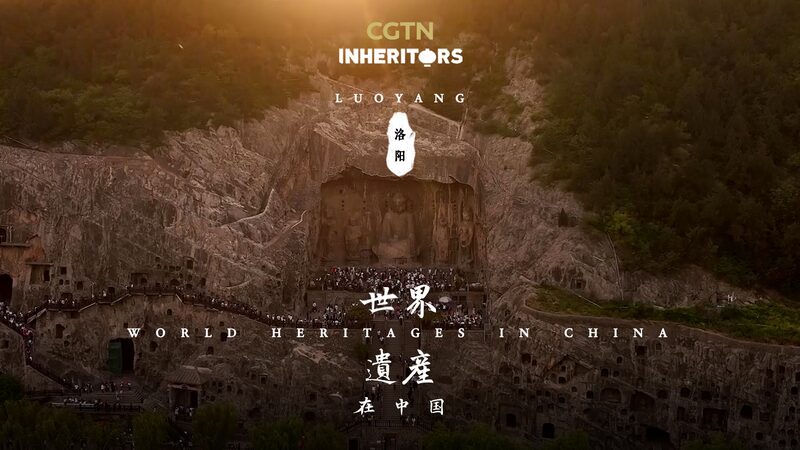From the sun-baked sands of Egypt to the lush river valleys of China, ancient artisans carved their legacies into stone—and into history. Meet the Abu Simbel and Longmen Grottoes, two iconic marvels that prove artistry and devotion transcend time and borders. 🗿
Abu Simbel: Pharaohs in Stone
Built over 3,200 years ago, Egypt’s Abu Simbel temples are a flex of pharaonic power and divine worship. The four colossal statues of Ramses II guard the entrance like ancient Avengers, while inside, walls whisper tales of gods and conquests. Fun fact: The entire complex was MOVED in the 1960s to escape flooding—talk about a real-life ‘monumental’ task! 👑
Longmen Grottoes: Buddha’s Mountain
Meanwhile, in the Chinese mainland, the Longmen Grottoes’ 100,000+ Buddhist statues—carved over 1,500 years—showcase Tang Dynasty elegance. Imagine emperors funding this spiritual Instagram feed to boost their karma. The 17-meter-tall Vairocana Buddha still radiates Zen vibes, proving serenity is forever in style. 🧘♂️
Why It Matters Today
Both sites aren’t just tourist selfie spots. They’re time capsules of faith, politics, and human grit. Abu Simbel’s relocation reminds us preservation is a global mission, while Longmen’s delicate carvings challenge modern tech to keep history alive. 🛠️
📸 Pro tip for travelers: Visit Abu Simbel at sunrise for golden selfies, and hit Longmen at dusk when the statues glow. Your Insta followers will thank you. 🌅
Reference(s):
cgtn.com






